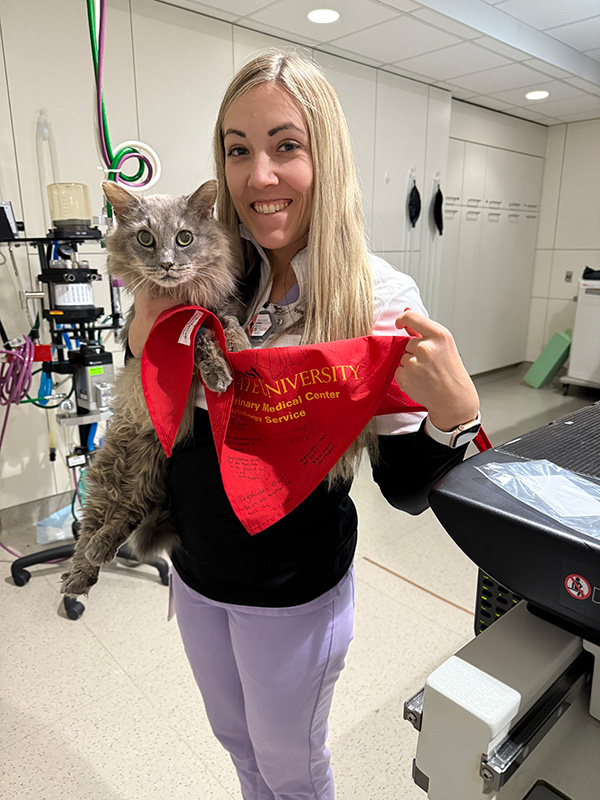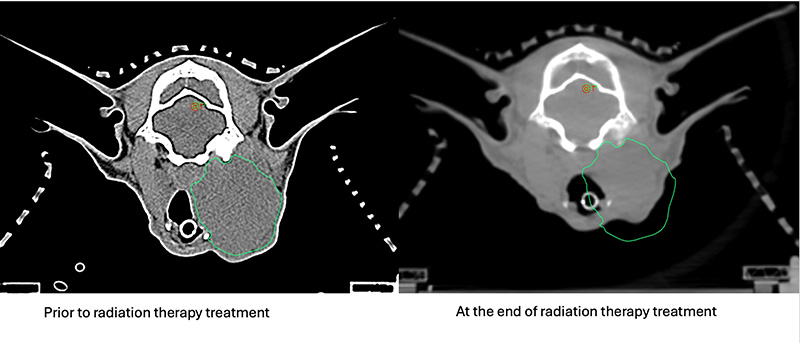
By the time Ghost was presented at the Hixson-Lied Small Animal Hospital his lymph nodes were so large they were affecting his ability to eat, drink and breath normally.
The seven-year-old domestic long hair cat was diagnosed with nasal lymphoma, the most common cancer that occurs within a cat’s nasal cavity. To treat the disease, Ghost received palliative radiation therapy from the Oncology Service in the Hixson-Lied Small Animal Hospital.
In all the cat received five daily treatments. “We treated with radiation therapy because this is the most effective treatment for nasal lymphoma,” said Dr. Tokaj Kozak, oncology resident. “Chemotherapy alone has been shown to be less effective for the treatment of this disease, so we commonly recommended following radiation therapy with chemotherapy.”
The results were almost immediate. By his second treatment, Ghost had a decrease in his lymph node size. His nasal and eye discharge had begun to decrease.
“By rapidly shrinking the lymph nodes with radiation therapy we were able to help Ghost return to normal quality of life,” Kozak said.
Without this treatment, the nasal congestion and discharge can interfere with a cat’s sense of smell and affect appetite. With the rapid resolution of the nasal discharge, Ghost was able to return to normal eating and drinking. Kozak says the multimodal cancer treatment with radiation and chemotherapy is important for cat owners to consider because some patients can have involvement of distant organs later in the course of the disease. “We recommend following up with chemotherapy to try to prevent or prolong this from occurring for as long as possible,” Kozak said. “Once distant organ progression develops it is very difficult to treat the disease, so we also recommend chemotherapy after radiation therapy.”
January 2025

